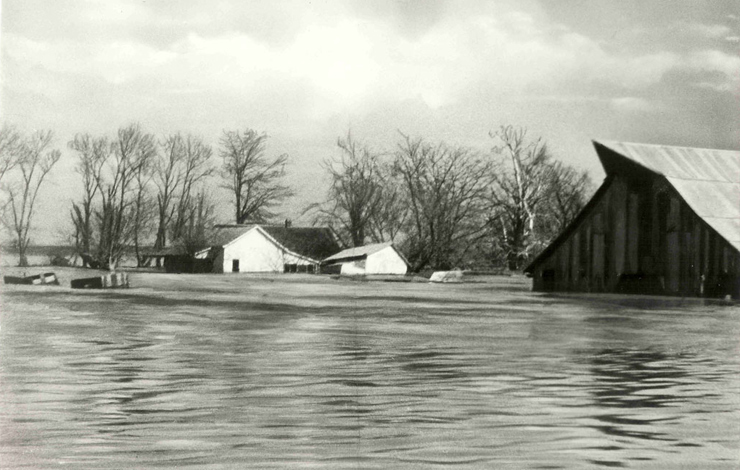
It was the mid- 1950s and my sociology professor announced to our class one day that he was about to show us a documentary film. Students began to groan. Documentaries to many of us—unless they were about sex education—meant B-O-R-I-N-G.
The film our professor had selected was The River by Pare Lorentz. Lorentz had made the film in 1937-38, during the Great Depression, a time when the Midwest had become a giant dust bowl as a result of drought, soil erosion and deforestation. The River was designed to show how industrialization had ravaged the beauty and richness of the land, through erosion and floods, and had also impoverished the people. The film ended on an optimistic note by showing the federal government (the sponsors of the film) rebuilding the land and uplifting the lives of the people who lived on it. At that time, most filmmakers believed that President Franklin D. Roosevelt had transformed the government into an instrument of social change. While The River was a sermon about innocence (the land), the devil (industrialization) and redemption (the federal government), it was a sermon delivered with the passion and poetry of a John Donne.
From the film's opening moment—mountainous white clouds drifting across a brilliant, bright sky, followed by a cascade of images of brooks, streams, rivulets and rivers rushing down mountains and valleys and flowing across plains, eventually joining with the Mississippi River—I was enthralled. Just as the flowing waters in the film merged into a single majestic river, so too the flow of film's narration, images and music merged, for me, into a majestic work of beauty that transcended its parts. The narrative, which Lorentz wrote in the style of Walt Whitman, was more like an incantation chanted to honor river gods than a recitation to inform an audience. The rhythm of the film, like the narrative, was built around structural repetitions that continually reinforced its power rather than detracted from it.
Some years later, when I finally made my first film—the subject was retarded children—I tried to follow in Lorentz's path as much as my subject matter would allow. I attempted to combine beautiful images with poetic narration and music. Despite the film's positive critical reaction, I felt that the style of filmmaking I had chosen was not appropriate to the subject matter. It cast a romantic veil over the subject, softening the subject rather than bringing it into sharp relief.
A new generation of filmmakers—Bill Jersey (for whom I eventually worked) Robert Drew, the Maysles brothers, Ricky Leackock, DA Pennebaker and others—were pioneering new ways for documentaries to explore and reveal the world. Their vérité or direct style of filmmaking eliminated or minimized narration and music.
But what goes round sometimes comes round. In recent years, narration and music been revitalized in the historical documentary—a genre in which I also work—and which once again presents the opportunity to seek the excellence Lorentz attained when he blended narrative, music and image into an incomparable, and sometimes magical, work of art.
Richard Wormser has written, produced and directed over 100 programs for television, educational institutions and government. He was the originator, series producer and co-director/writer of the award-winning PBS series The Rise and Fall of Jim Crow.
